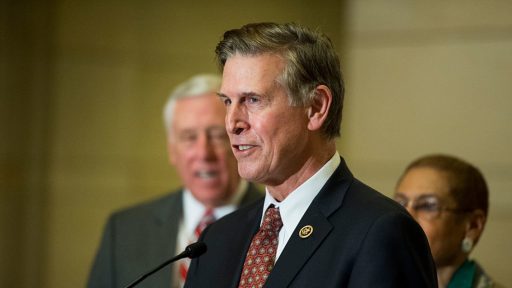We’ve come a long way since Phil Donahue first burst onto the talk show scene in the 1970s. No longer a nation of Brady Bunch wannabe’s — with family security and love as our goal — viewers in the ’90s mimic the prurient behavior modeled before our eyes on Sally Jesse Raphael, Jenny Jones, and Ricki Lake. How long will our approval be endured? Isn’t it ironic? The louder we clap, the worse our condition becomes.
The talk show format has been reduced to a fairly simple formula. On one show this morning, the host introduced her topic of the day and the corresponding guests. After a little banter, she went to the crowd. Pacing with cue cards and an oversized microphone, she found a man in the back and asked him, “What do you think about (topic of the day)” The young man said, “Well, I think it’s great that they aren’t ashamed of their lifestyle and that they have the courage to (topic of the day) despite their critics.” As he took his seat, applause filled the tiny studio. The noise registered in the control room and the applause meter moved accordingly.
For the producer, a moving applause meter means that the show still has healthy vital signs in the cutthroat talk show world. In the studio audience and back in Pocatello, Idaho, however, the applause is registering something else: values, meaning, and truth. While many critics worry primarily about the influence of the steady flow of sexual deviants, confessional misfits, and oddballs on the sets of sensational talk shows, I worry more about the actual format. I have to wonder if the applause meter has become, for a segment of America, a new standard of meaning.
This month, Phil Donahue, the father of the modern talk show, taped his last program. Out talked by the new generation of hosts whom he calls his illegitimate step kids, Donahue will end his once unique experiment in interactive television. In the 1970s, talk shows were stocked with experts and studio audiences were able to watch the hosts work through a planned format with the informed guests. In the obscure market of Dayton, Ohio, Donahue broke with convention and turned the microphone over to the audience. “What do you think?” he asked them? “How does that make you feel?”
The idea slowly caught on. The audience had a stake in what was happening on stage. They could air their opinions and express support or approval. Eventually the show moved to Chicago and then New York. Producers began to see ratings jump as audience interaction grew more lively and America started warming to the idea of finding entertainment and meaning not only from the expert guests on the show but also from the audience. The audience area of the studio began to grow and become more photogenic. Over the years, production companies such as Multimedia, Paramount, Columbia, Tri-Star, and 20th Century Fox worked to perfect the talk show formula and now they crank out a large volume of talk-shows with minimal effort and budget. The industry has created a new generation of hosts, including Sally Jesse Raphael, Ricki Lake, Montel Williams, Jerry Springer, Jenny Jones and more. The format is tailor-made to ratings-conscious producers. By changing topics and moderating the buttons to be pushed by the host, a talk show is much easier to manipulate according to viewer response than are sitcoms and dramas.
While they manipulate the format to get a lively and profitable show, however, has the talk show industry manipulated the American public? America’s virtue-meister is convinced they have. On October 26, 1995 William Bennett held a press conference with Senators Joseph Lieberman (D-CT) and Sam Nunn (D-GA) to mount a high-profile assault on daytime TV talk shows and the big companies that produce them. Bennett explained that the shows degrade human personality. Their means for changing the industry was not censorship or legislation but pressure applied to commercial sponsors in order to shame producers into a sense of moral responsibility to their viewers.(1)
A ripple effect actually began to spread through the industry as producers under pressure from corporate sponsors started boasting cleaned-up formats. Bill Bennett praised Oprah Winfrey for taking a more high-road approach. Oprah insists that her show has the ability to be a positive influence. Oprah’s audience rewarded her with a dismal ratings drop.
Camille Paglia defended talk shows against Bennett’s criticism in the electronic magazine Salon. She resented the “blatant condescension and snobbery” in the discussion of the format. She explained, “throughout history, the doyennes of etiquette and propriety have scorned working-class behavior as coarse, common, and vulgar … as in raunchy early rock and roll, tastelessness is pop cultures’ most revolutionary weapon against bourgeois repression.” Paglia concedes that the daytime talk show genre, however, has been in artistic decline for the past few years. “The range of new topics is finite, and the frenzied pace of five programs per week brutalizes producers and hosts alike, who end up going for the easy laugh and the cheap shot, an adolescent Three Stooges buffoonery.”(2)
The shows have gravitated toward a younger audience (6% of the audience share is under the age of 11) who are drawn to shows with titles such as “My Daughter is Living as a Boy” on Sally Jesse or “Getting Bigger Breasts or Else” on Rolanda. According to Karina Bland of the Phoenix Gazette, the talk show format is especially harmful for minors. “When children are growing up, they look to adults as authorities for information … this material is presented as valid and real even though it represents a very small fraction of human interaction. They have no reason not to believe what is said.”(3)
Some hosts explain that their shows have a higher purpose. Sally Jesse Raphael said in a Washington Post article, “the purpose of [my] show is very much a morality play . . . the audience tells them [their actions are] a bad thing.” She encourages critics not to overlook the educational value of programs that grapple with AIDS, incest, drug addiction, breast implants, and teenage pregnancy. But why is the educational material aired alongside sisters mud-wrestling in a pit to the sound of pig noises (Richard Bey show), and what is unique about the tactical approach of education on a talk show?(4)
In the long and colorful history of public discourse, humans have witnessed the logical dialogues of Plato, the apologetic witness of Paul in Athens, the eloquence and persuasion of Daniel Webster’s legal arguments, and the sparring of science and faith in the Scopes trial. We are now in what is heralded as the “information age,” and we can see issues debated on seemingly endless formats now available through C-Span, the Internet, 24-hour news services, and numerous cable outlets. More important than the mere dispensing of information, however, is the manner in which the material is handled and the consequences that result. At the same time that we are being overloaded with information, talk shows have served as one of the major liberalizing forces in our culture.
Paglia points out, “Phil Donahue did more to win acceptance of gays in middle America than the entire gay activist establishment.” She explained his tactic: “Donahue used melodrama — personal testimonies by gays and their parents — to sway people’s emotions and appeal to their better natures.”(5) The assumption of this tactic, however, is that melodrama is needed to defend causes that lose ethical and logical arguments. Emotional attachment trumps rational and spiritual insight.
On most daytime talk shows, truth is not reached by using logical syllogisms, the scientific formula, or authoritative revelation; it is merely implied via manipulative hosts, confessional guests, and an outspoken audience. Camille Paglia explains: “Colorful confrontationism and quick, bruising skirmishes are the rule. Psychologists are carted out like priestly confessors to dispense bromides and give dramatic closure.”(6) Social deviances such as prostitution and adultery are rewarded with applause and statements like “who are we to judge and impose our values?” and “we’re proud of you for being able to stand out and do your own thing.”
Any reforms should be encouraged, but the damage has already registered in America’s level of discourse. Thanks to ratings-driven talk show producers and two decades of unchecked talk show influence, a large segment of our public has a new standard of truth. For too many Americans, the litmus test of truth is no longer transcendent authority, sound logic, legal defensibility, or even common sense. In our age the defining test has become the applause meter. And that is not worth applauding.
Endnotes
- Howard Kurtz, “Morality Guru Takes on Talk TV: Daytime Confessionals are William Bennett’s New Targets,” Washington Post, 26 October 1995, 1(C).
- Camille Paglia, “Talking Trash: In Defense of TV Talk Shows,” Salon, [Online] Available: Internet: http://www.salon1999.com/12nov1995/feature/paglia.html(3K).
- Karina Bland, “Grade Schoolers Turn on to Trashy TV Talk Shows,” The Phoenix Gazette, 25 September 1995, 1 (A).
- Kurtz, 1(C).
- Paglia.
- Ibid.





